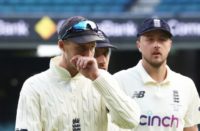In common with many others, I wearily stretched out a hand to locate the bedside radio button last week, only to find that Radio 4 Long Wave had mysteriously switched itself from commentary on the second Test in Dhaka to some ornithological programme involving the identity of a rare breed of feathered wildlife.
Hello, I thought. The Test match must have finished in less than two days. Sure, it was spinning a bit on day one, but nothing to suggest it would all be over before the buttered scones – or whatever they have for tea in Bangladesh – on day two. And then all became clear.
The voice I’d assumed must belong to David Attenborough was in fact that of Charles Dagnall, and the Test match was still going after all. However, in the best TMS traditions, the thorny issue of whether or not Cook should have had another close catcher behind the wicket, or how many words during one of Stokes’ conversations with Mahmadullah stretched to more than a single syllable, had been temporarily shelved.
With the result that early morning listeners anxious for the score were being informed instead that there was a house martin pecking away at the commentary box window.
Or was it a house martin? It could have been a swift apparently. Suddenly we were awash with tweets, not from the bird but from the twitterers, or whatever it is they’re called, delivering their verdicts from all corners of the globe. And just when it sounded as though Charles Darwin might be about to become Charles Dagnall again, we were informed instead, courtesy of another twitterer, that when these house martins, or possibly swifts, flew low to the ground, it was about to rain.
At which point it occurred to me that an age old problem for TMS had been solved at a stroke, in that no longer would the programme have to leave the cricket for the Shipping Forecast. All the skipper of that North Sea trawler would now have to do was pop his head out of the porthole, spot a couple of seagulls skimming around just above the waves and shout: “Batten down the hatches, lads. And hand me those oilskins.”
Eventually, the TMS discussion moved from house martins and swifts to dragonflies and moths, which made it a shame that the programme’s resident expert on creatures that fly about in the sky was absent for the Bangladesh leg of the tour, and was thereby unable to adjudicate on matters of identification. Although thinking about it, there is no real evidence that Henry Blofeld’s ornithological expertise stretches much beyond pigeons.
Dear old TMS. I have a theory as to how the programme has evolved in the way that it has, into a world in which the cricket has occasionally been known to interrupt earnest discussions on pigeons, red buses, chocolate cakes, and Mrs Boycott’s kitchen pinafore.
And that’s because, in the early days of the programme, there were long periods when nothing at all was happening.
I mean to say, when Boycott and Edrich were batting, or Lawry and Simpson, entire overs would go by when the only sound was of a ball thudding into the wicketkeeper’s gloves as the batsman watched it go by the off stump, and commentators had no choice but to fill in the gaps. In the same way as a human obliged to live in water all his life would eventually sprout webbed feet, so cricket commentators watching Boycott compiling a watchful 23 not out before lunch eventually end up talking about birds, or what Aggers had for breakfast.
Sometimes when the commentators go off piste, it can be educational as well as entertaining. As was the case in Dhaka when the TMS team solved the mystery of why, when the Sky TV cameras panned around the ground, groups of animated locals would start giving viewers the V-sign. Which some of us felt was not entirely in keeping with the game’s etiquette and tradition.
However, it was TMS who explained that the Bangladeshi V-sign is in fact a Winston Churchill delivered the other way around. So they weren’t being rude at all, merely giving their prediction of the result. Which in this instance turned out to be correct.
The other area in which TMS has evolved is in the role of the scorer. Initially, one imagines, it involved some chap with a pencil and a scorebook entering six dots and joining them up at the end of the over to make an “M”, for maiden. Then along came Bill Frindall, who could tell you things like how many Englishmen had made a Test century before lunch, or even how many balls he’d faced.
Frindall, though, couldn’t answer every question, and when he got an awkward one, he’d either snort, or ignore it. He knew that very soon a chocolate cake discussion would break out, and that the inquiry that had stumped him would be quickly forgotten.
Now, however, we have Andrew Samson, who can answer absolutely everything in seconds. As he did when he informed us that England’s collapse in Dhaka was the third biggest from 100-0 in history. This is a chap who could tell you who won the deck quoits when England sailed from Tilbury to Fremantle in 1954, or what colour underpants WG Grace was wearing when he made his last Test appearance at Trent Bridge in 1899.
The one danger to TMS (make that two if you include hiring ex-players to perform like giggly fourth form schoolboys) is in Test cricket continuing to get less and less boring. Take the two Test series in Bangladesh. There was so much incident that the commentators and analysts performed miracles to still wander off into different areas of conversation, including at one point, and heaven only knows how, a discussion on why the World Series (of baseball) is called the World Series.
However, after tea, when England were losing ten wickets in about an hour and a half, there was absolutely no prospect of a bird or a baseball match sneaking into the dialogue. There was far too much going on. No doubt about it.
This all-singing, all-dancing Test cricket stuff could be the end for TMS, at least as we know it, and what a shame that would be.
This piece originally featured in The Cricket Paper, November 4 2016
Subscribe to the digital edition of The Cricket Paper here












